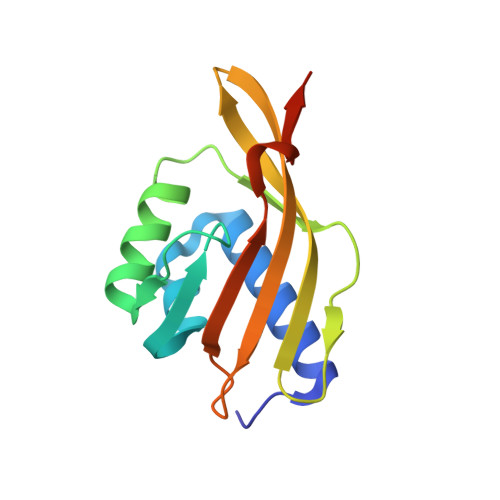A Preorganized Electric Field Leads to Minimal Geometrical Reorientation in the Catalytic Reaction of Ketosteroid Isomerase.
Wu, Y., Fried, S.D., Boxer, S.G.(2020) J Am Chem Soc 142: 9993-9998
- PubMed: 32378409
- DOI: https://doi.org/10.1021/jacs.0c00383
- Primary Citation of Related Structures:
6UFS - PubMed Abstract:
Electrostatic interactions play a pivotal role in enzymatic catalysis and are increasingly modeled explicitly in computational enzyme design; nevertheless, they are challenging to measure experimentally. Using vibrational Stark effect (VSE) spectroscopy, we have measured electric fields inside the active site of the enzyme ketosteroid isomerase (KSI). These studies have shown that these fields can be unusually large, but it has been unclear to what extent they specifically stabilize the transition state (TS) relative to a ground state (GS). In the following, we use crystallography and computational modeling to show that KSI's intrinsic electric field is nearly perfectly oriented to stabilize the geometry of its reaction's TS. Moreover, we find that this electric field adjusts the orientation of its substrate in the ground state so that the substrate needs to only undergo minimal structural changes upon activation to its TS. This work provides evidence that the active site electric field in KSI is preorganized to facilitate catalysis and provides a template for how electrostatic preorganization can be measured in enzymatic systems.
- Department of Chemistry, Stanford University, Stanford, California 94305-5012, United States.
Organizational Affiliation:

















